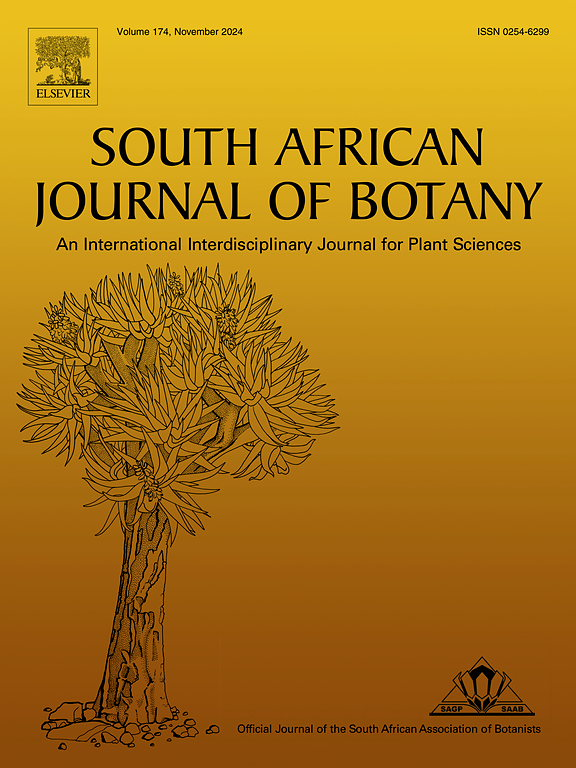“Efficiency of RAPD, ISSR and SSR markers in assessing clonal fidelity of In Vitro propagated Punica granatum plantlets of cultivar Bhagwa”
IF 2.7
3区 生物学
Q2 PLANT SCIENCES
引用次数: 0
Abstract
One of the significant challenges faced by pomegranate growers is the propagation of true-to-type plants. The fidelity testing of tissue cultured pomegranate saplings is crucial to ensure they are genetically identical to the mother plant. Micropropagation of the Bhagwa cultivar of Punica granatum was achieved using nodal explants on MS medium with 1 mg/L BAP, 0.1 mg/L NAA, 0.5 mg/L silver nitrate and 25 mg/L adenine sulfate for culture establishment. For shoot multiplication, NAA was increased to 0.5 mg/L while maintaining BAP at 1 mg/L. Rooting was performed on media containing 0.5 mg/L IBA and 0.5 mg/L NAA. Micropopagated plantlets underwent in vitro hardening followed by primary hardening before being transferred to greenhouse conditions. Genetic fidelity of these micropropagated Punica granatum plantlets to their mother plant was evaluated using molecular markers, involving RAPD, ISSR and SSR. To achieve this objective, we utilized a set of 48 SSR, 20 RAPD and 12 ISSR for screening purposes. Out of these, a subset of 14 SSR, 10 RAPD and 9 ISSR primers generated 35, 94 and 89 distinct bands, respectively. Few SSR (PgSSR6, PgSSR22 and PgSSR35), RAPD (TIBMBB15 and TIBMBC5) and ISSR primers (ISSR6) exhibited high marker indices such as PIC, He, MI and DP. All selected markers produced 100 per cent homogeneous bands, further supported by pairwise correlation analysis, which indicated high genetic uniformity of all in vitro raised Bhagwa saplings. The outcome of the study will help in quality assurance to the Bhagwa pomegranate growers and horticultural industry.
求助全文
约1分钟内获得全文
求助全文
来源期刊

South African Journal of Botany
生物-植物科学
CiteScore
5.20
自引率
9.70%
发文量
709
审稿时长
61 days
期刊介绍:
The South African Journal of Botany publishes original papers that deal with the classification, biodiversity, morphology, physiology, molecular biology, ecology, biotechnology, ethnobotany and other botanically related aspects of species that are of importance to southern Africa. Manuscripts dealing with significant new findings on other species of the world and general botanical principles will also be considered and are encouraged.
 求助内容:
求助内容: 应助结果提醒方式:
应助结果提醒方式:


